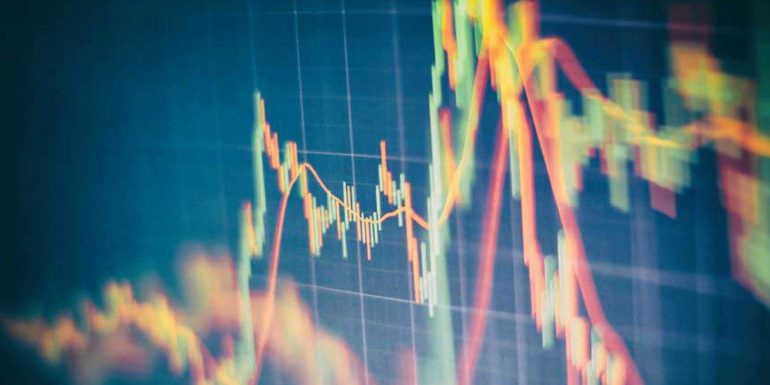DNR Capital: “Quality companies poised to win”
The market has enjoyed a strong bounce back from its lows and the economy continues to open up. But concerns linger regarding the strength of the economic recovery amidst a pick-up in COVID-19 cases.
Jamie Nicol, Chief Investment Officer, DNR Capital notes that the risks appear more balanced than they did a few months ago. “While we expect ongoing economic recovery, and see equities as better value (in the long run) than most asset classes, the uncertain climate, strong bounce and lack of absolute value support suggests volatility can emerge and should be expected,” says Nicol.
As a consequence, DNR Capital has made a number of moves aimed at shoring up the resilience of its portfolio. “An uncertain environment is an opportunity for quality companies to win market share and we have seen a number of companies in our portfolio step up their plans. Companies like James Hardie Industries (JHX) and Cochlear (COH) are winning market share and investing in new product while peers retreat. We will continue to focus on those companies where we see opportunities to enhance their value in the current climate.
“We believe it is sensible for investors to look through the short-term weakness attached to COVID-19 and price stocks off the likely FY22 and beyond earnings. Clearly, however, there is uncertainty regarding that earnings trajectory.”
In this paper, Jamie Nicol examines the key bull and bear points impacting the outlook for the market.
Key bull points:
Economy is recovering – through the worst of the COVID-19 crisis. The easing in monetary and fiscal policies has cushioned the economic blow from COVID-19. Household and business lending interest rates have fallen as the cash rate was lowered to 0.25%, the 3-year bond yield is being anchored at ~0.25% and the RBA is providing 3-year funding to banks at 0.25%. The main game is, and will be, fiscal policy. Federal Government measures to support Australian households and businesses are expected to total at least $125 billion from April to September. This is equivalent to about 13% of GDP over that period. Add in early superannuation withdrawals by households, of which around $16 billion has already been paid, and the support is close to 16% of GDP.
That’s a huge number. On top of this has been other fiscal support from state and local governments. While Australia’s technical recession will be confirmed in the June quarter, early economic indications are that activity may have bottomed in April. Google mobility trends point to sustained recovery in activity and a trend towards normalcy in Australia. Encouraging signs are being observed that consumers are returning to venues as social restrictions are eased. A return to growth was potentially seen in June as composite PMI (purchasing managers’ indices) expanded.
The latest Australian Bureau of Statistics (ABS) retail sales data also suggests stimulus is flowing into the economy, with data from May painting a picture of surprising resilience. Despite outsized volatility over the past few months, sales have returned to near-trend, in aggregate.
Potential vaccine or treatments to further enable a recovery – Efforts to re-open the global economy will ultimately require effective treatments. Dozens of vaccines are in the pipeline and while a widely available treatment is several months away, a handful are already in late-stage trials. Treatments for the virus are closer at hand with several showing encouraging results for a range of drugs already approved for human consumption.
Of dexamethasone, a readily available and cheap steroid, The Economist noted recent clinical trials at Oxford “… reduced deaths by a third among the most severely ill covid-19 patients” and is set become standard care within the NHS2. Despite upticks in Victoria, Australia’s reported cases have stayed suppressed and the death rate remains low by global standards.
Supportive fiscal and monetary stimulus – Globally, central banks have proved willing to leverage their balance sheets, engaging in synchronised fiscal and monetary action. The International Monetary Fund (IMF) estimates that US$9 Trillion ($12.7 Trillion) in direct budget support and quasi-fiscal operations3 has been deployed since the onset of the crisis.
The scale of the stimulus is unprecedented in history, dwarfing that of the global financial crisis in quantum and speed. Fiscal stimulus is greater today than it was during the great recession.
Domestically, the raft of programs targeted at maintaining employment and supporting households is finding its way to consumers. Government transfer payments are providing significant support to household disposable income.
Equities better value than most asset classes – As discussed in recent months, equities are doing well owing to a lack of alternatives and strong liquidity. Investors tend to be positioned overweight cash and underweight equities. Cash and fixed interest offer little return, while office and retail property carry significant risks at present. Clearly there are substantial risks in stocks as we emerge from the darkness of an unprecedented shutdown. The speed and shape of the recovery will have a substantial impact on the valuation of various equities.
Forward earnings multiples have rebounded astonishingly quickly from the crisis, reflecting the market’s willingness to look through the next two years to a strong bounce back in FY22 earnings.
Positioning still cautious – The market remains overweight cash and underweight equities. Despite a renaissance in day-trading and an explosion in retail stockbroker accounts, a significant amount of institutional capital remains on the sidelines. With negligible returns available from bonds and fixed interest investments, global pension, superannuation and other institutional funds need greater equity exposure to achieve their return targets.
Fund manager cash balances remain elevated and have manifested a challenging performance headwind. This positioning provides a tailwind to equities and reinforces a “buy the dip” mentality during periods of volatility.
Key bear points:
COVID-19 second wave – Despite successes in Europe and Asia, much of the world (developing nations in particular) never flattened their curves and the US is suffering a second wave of infections. Notwithstanding global markets showing remarkable willingness to look through a near-term earnings recession, markets remain susceptible to the inevitable outbreaks as social restrictions are scaled back. As previously noted, the performance of the market will be tied to the shape of the economic recovery. Large uncontrolled outbreaks threaten to turn a V-shaped recovery into a W-shaped recovery.
Is the economy simply enjoying a pent-up demand bounce? – Can the economic recovery be sustained? The sharp rebound in economic activity has been pronounced and confounded many economic forecasts. Given shelter-in-place directives forced a reduction in discretionary spending, there is concern that the snap-back in spending is just catch-up consumption drawing on increased savings and temporary government handouts. If this is the case, then the release of pent-up demand is just masking the effects of the underlying recession and rather than entering a sustainable recovery, economic activity will fade as we fall off the fiscal cliff. This would produce a more drawn-out recession and weigh heavily on equities.
US election – As the expected outcome (according to betting markets) of the upcoming US election has swung from a likely Trump second term to a Biden victory, questions now arise about the market’s likely reaction to a Democrat presidency and potential Democratic-controlled Senate. With an enunciated goal of rolling-back Republican corporate tax cuts and restoring a top marginal tax rate of 39.6%, Wall Street is wary of Democratic policies with the potential to lower corporate earnings and business confidence. Trump, however, also poses risks for markets, given the deterioration in trust of global institutions and uncertainty in negotiations with the US. Much will depend on who Biden selects as vice president and whether he follows the tried and tested path of pushing to the centre now that he has won the primary.
Geopolitical uncertainty – A range of geopolitical issues currently pose risks to global markets. Recent developments in Hong Kong with China’s imposition of new security laws have served to escalate tensions between the US and China and compound an existing trade war. A deterioration in relations between Australia and China has also been observed since the government threw support behind an investigation into the source of COVID-19, threatening trade with our largest partner. Social unrest is even higher than usual in North America as the Black Lives Matter movement has spread, with protests breaking out around the world.
IMPORTANT NOTE & DISCLAIMERS: The information relating to DNR Capital has been prepared by DNR Capital Pty Ltd, AFS Representative – 294844 of DNR AFSL Pty Ltd ABN 39 118 946 400, AFSL 301658. Whilst DNR Capital has used its best endeavours to ensure the information within this document is accurate it cannot be relied upon in any way and you must make your own enquiries concerning the accuracy of the information within. The information in this document has been prepared for general purposes and does not take into account your particular investment objectives, financial situation or needs, nor does it constitute investment advice. Before making any financial investment decisions you should obtain legal and taxation advice appropriate to your particular needs. DNR Capital will not be responsible or liable to anyone who acts or relies upon anything contained in, or omitted from, this document. Past performance is not indicative of future performance.










